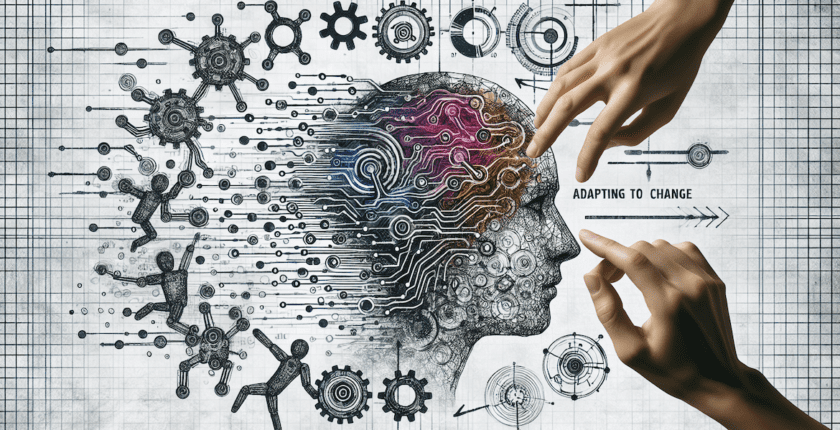The Future of Work: Will Robots and AI Reshape Our Careers and Lives?
The Future of Work: Will Robots and AI Reshape Our Careers and Lives?
Whether AI will take over the world ignites a blend of excitement and concern across various domains, influencing not only the job market but also how we envisage our future of work in an increasingly automated world. A study by the Pew Research Center shows a divided opinion among experts on the effects of AI and robotics on the economic and employment landscape in the coming decade, signaling the deep, technological shifts poised to reshape our lives by 2025.
This division reflects a broader discourse on the impact of autonomous systems and algorithmic advancements, highlighting key questions about human relevance in a future dominated by machine intelligence. The evolving landscape presents a pivotal moment for exploring career options, job ideas, and the future of careers in a world intertwined with AI.
As we delve into this exploration, we’ll examine how advancements in AI and robotics might influence our careers, lives, and the broader economic picture. We aim to explore not just the feared apocalyptic scenarios often depicted in discussions about AI taking over but also the potential for new opportunities that these technologies herald.
Our journey will navigate through the ethical considerations of bias and fairness in AI, the transformative role of machine learning, and the critical importance of human feedback in sculpting a future where technology amplifies rather than diminishes our human experience. This exploration offers a unique lens through which to view career options and job ideas in a technologically advanced future.
The Historical Context
The journey of automation and artificial intelligence AI is deeply rooted in history, tracing back to innovations that fundamentally changed human labor and industry. Let’s explore some pivotal milestones that have set the stage for today’s technological landscape. This historical context is crucial for understanding the evolving career landscapes in the realm of AI and automation.
Early Beginnings of Automation

The inception of semi-automation can be traced back to the use of water wheels, which harnessed the power of falling water from watermills to drive mechanical processes. This early form of automation significantly reduced the reliance on manual and animal labor. Similarly, windmills, invented by the Persians between the 7th and 9th centuries, played a crucial role in grinding grain and facilitating other mechanical tasks.
Industrial Revolution: A Major Turning Point
The Industrial Revolution marked a significant shift, introducing the mechanization of factories. This era saw the development of steam engines, steam mills, and internal combustion engines, which eventually replaced watermills and windmills. In 1785, Oliver Evans developed the first fully automated industrial process in his automatic flour mill, setting a precedent for future industrial automation.
Rise of Electrification and Digital Controls
The transition to electric motors in manufacturing plants, spurred by the advent of relay logic and electrification, boosted factory outputs by 30%. The invention of microprocessors in 1971 further accelerated the adoption of digital controls in manufacturing, paving the way for more sophisticated forms of automation.
Robotic Process Automation Takes Center Stage
The introduction of industrial robots in the 1960s revolutionized manufacturing by automating specific, repetitive tasks such as welding and assembly. This trend continued to evolve with the integration of Computer-Aided Design (CAD) and Computer-Aided Manufacturing (CAM) in the 1970s, which transformed how products were designed and produced.
The Computational Revolution
The 1980s and 1990s witnessed the Computational Revolution, which integrated computing power into factories, revolutionizing management structures at every operational level. This period also saw significant advancements in robotic process automation, further enhancing manufacturing efficiency.
These historical advancements demonstrate a clear trend from manual to intellectual labor, particularly evident in the shift of employment patterns in places like the UK, where manufacturing jobs have decreased, and service sector roles have dramatically increased. This historical context sets the foundation for understanding the current and future impacts of AI and robotics on our careers and lives, underscoring the importance of adapting to career shifts in the face of technological evolution.
Understanding AI and Robotics
Artificial Intelligence (AI) and robotics are two distinct yet interconnected fields that are reshaping how we interact with technology and its applications in our daily lives and industries. Here, we delve into the essence of these technologies, their differences, and their combined impact on automation and innovation.
Artificial Intelligence: Enhancing Machine Capabilities
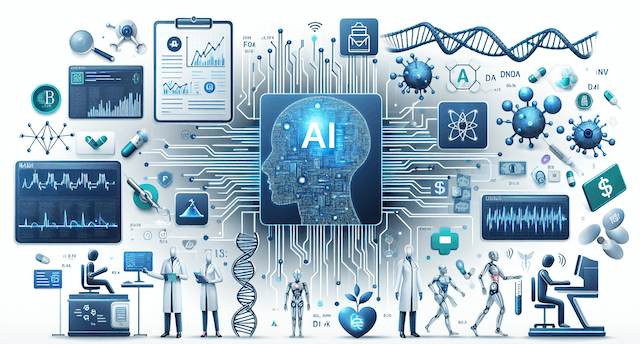
AI, a pivotal branch of computer science, empowers machines to undertake tasks usually requiring human intelligence, such as learning from vast amounts of data, making informed decisions, and solving complex problems. Its versatility shines in various domains, including finance, where it processes banking data for investment decisions, and healthcare, where it analyzes medical data to assist in surgical preparations.
Robotics: Transforming Physical Interactions
Robotics focuses on the design and creation of robots that interact with the physical world. These robots are programmed to perform tasks that are either repetitive, demand high precision, or are too hazardous for humans, ranging from product packaging in industries to conducting intricate surgical procedures in hospitals, showcasing robotics’ pivotal role in enhancing physical task automation.
The Synergy of AI and Robotics
While robotics deals with physical task automation, AI enhances this by introducing advanced decision-making capabilities. This synergy is particularly evident in manufacturing, where AI-driven robots can adapt to varying environments, optimize performance, and autonomously diagnose operational errors. Together, AI and robotics not only automate but also innovate, paving the way for smarter systems that boost efficiency and safety.
AI-Driven and Robotics-Driven Automation
AI-driven automation leverages algorithms to empower machines with complex decision-making capabilities autonomously. In contrast, robotics-driven automation employs robots to manage and control tasks traditionally requiring human oversight, like inventory management and manufacturing operations.
The Future of Intelligent Robotics
The fusion of AI with robotics is ushering in an era of self-aware and situationally aware robots. These advanced robots can perceive and understand their surroundings, enabling safe and effective interaction with humans and other machines. This breakthrough is vital for applications in smart factories, autonomous vehicles, and personal assistant robots.
Addressing Challenges: Bias and Reliability
Despite significant advancements, AI and robotics confront challenges such as data bias and the reliability of AI tools. Biases in training data can lead to unfair decision-making by AI systems, while reliance on extensive data sets can result in errors and ‘AI hallucinations,’ where AI systems generate false or misleading information. Overcoming these hurdles is essential for developing fair and reliable AI systems.
AI and Robotics in the Job Market
The impact of AI and robotics on employment is profound, simultaneously creating new job opportunities in careers like AI ethics, machine learning engineering, and data science while displacing others. This reflects the growing need for skilled professionals to navigate the ethical and technical complexities of AI applications.
AI Role in Small Business Transformation
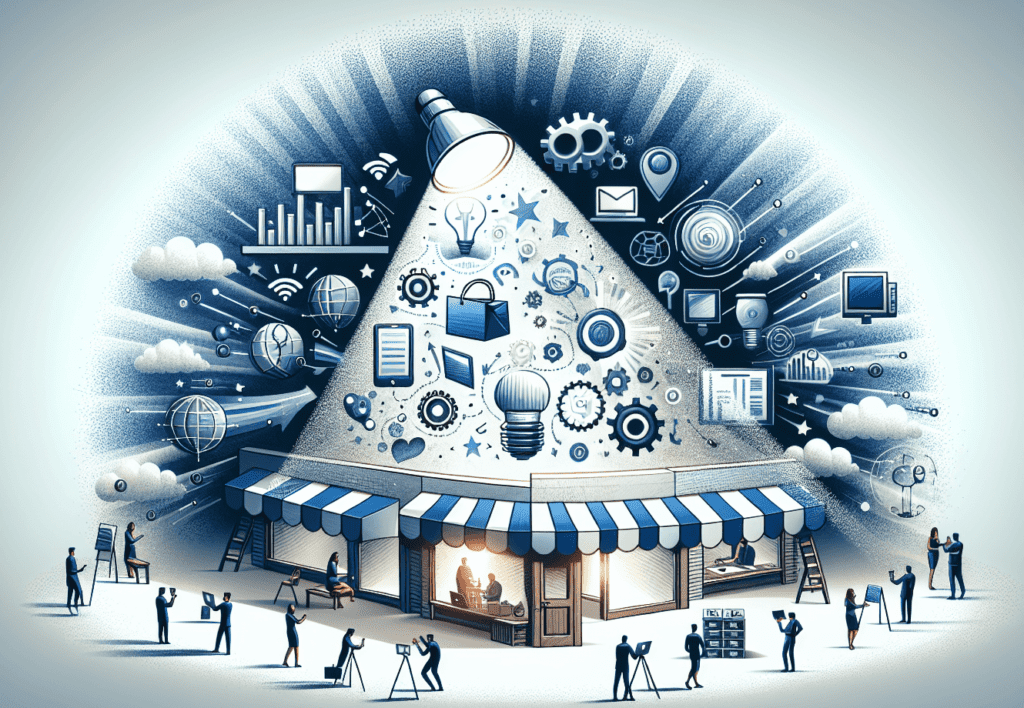
For small businesses, AI offers invaluable tools for gaining real-time insights into sales trends and financial management. By streamlining processes such as lending assessments, AI technologies reduce delays and paperwork, ensuring fairness in decision-making through comprehensive data analysis.
Understanding these technologies’ capabilities and limitations becomes crucial as we continue to weave AI and robotics into our economic and social fabrics. This insight will steer us in harnessing AI and robotics to augment human work and creativity, aiming for a balanced approach that benefits society at large.
Impact on Employment
Delving into the influence of AI and robotics on employment unveils a significant transformation in the job landscape. The integration of these technologies is reshaping existing roles and spawning new opportunities and challenges in the workforce, highlighting the dynamic nature of careers in this evolving field.
AI’s Dual Impact on Job Markets
- Job Replacement and CreationAI’s capability to automate tasks has sparked concerns about job displacement, with an estimated 800 million jobs potentially affected globally by 2030. Sectors such as manufacturing, retail, and finance could see the highest impact. However, AI also paves the way for new careers in fields like machine learning, robotics, and data analysis, which require specialized skills and expertise.
- Efficiency and ProductivityIn many industries, AI boosts efficiency by taking over repetitive and predictable tasks. This shift enables employees to concentrate on more complex responsibilities, enhancing productivity and adding value to their roles.
Economic Polarization and Workforce Adaptation
- Skill GapAI could lead to a polarization within income brackets. Workers adept at leveraging AI technology may see increases in productivity and wages, whereas those unable to adapt could fall behind, exacerbating income disparities.
- Education and TrainingTo bridge this gap, significant emphasis is placed on education and training systems to equip the workforce with necessary AI and robotics skills. This adaptation involves not only technical skills but also soft skills that machines cannot easily replicate, such as critical thinking and interpersonal communication.
The Role of AI in Shaping Job Functions
- White-Collar Automation AI is transforming white-collar sectors like legal services, financial services, and coding by making these fields more efficient. For example, AI tools in legal and financial services can analyze large volumes of data with greater speed and accuracy than humans, enhancing the decision-making process.
- Support Roles AI is not just about replacing jobs but also about augmenting human capabilities in various roles. For instance, AI-driven tools assist in tasks like resume screening and job applicant assessments, allowing HR professionals to focus on more strategic aspects of their jobs.
Addressing Job Displacement Concerns
- Government and Business CollaborationIt is crucial for governments and businesses to collaborate on creating policies that treat AI as a support system rather than a replacement. This approach includes developing social security systems that can accommodate the transitional phase as AI integrates more deeply into the job market.
- Public Perception and PolicyAddressing public fears about job displacement in evolve transparent communication about AI’s role and its benefits. Policies aimed at fair AI usage and preventing bias are essential to maintain trust and stability in the job market.
Future Outlook on Employment
- Emerging Job Categories As AI continues to evolve, new job categories are likely to emerge, particularly in areas that require human empathy, judgment, and interaction. These roles include psychological counseling, managerial positions, and creative professions, highlighting the dynamic nature of AI-driven career opportunities.
- Global Impact The effects of AI on employment vary globally, with advanced economies facing more immediate disruptions due to their rapid adoption of AI technologies. In contrast, emerging markets might experience these changes more gradually but could face increased inequality if not addressed properly.
This ongoing evolution in the job market, driven by AI and robotics, underscores the need for a proactive approach to workforce development and policy-making. Ensuring that workers are prepared for the changes brought about by AI will be crucial in harnessing the potential benefits while mitigating adverse effects. Adapting to these changes is essential for those looking to advance their careers in an increasingly automated world.
Economic Implications
Artificial Intelligence (AI) is poised to significantly reshape global economic landscapes, with projections indicating a potential to double annual growth rates by 2035. This transformation is driven by AI’s ability to enhance labor productivity, create a virtual workforce, and spread innovation across various sectors. Here, we explore the multifaceted economic implications of AI, focusing on its impact on global GDP, employment, and the digital economy.
Global Economic Growth and AI
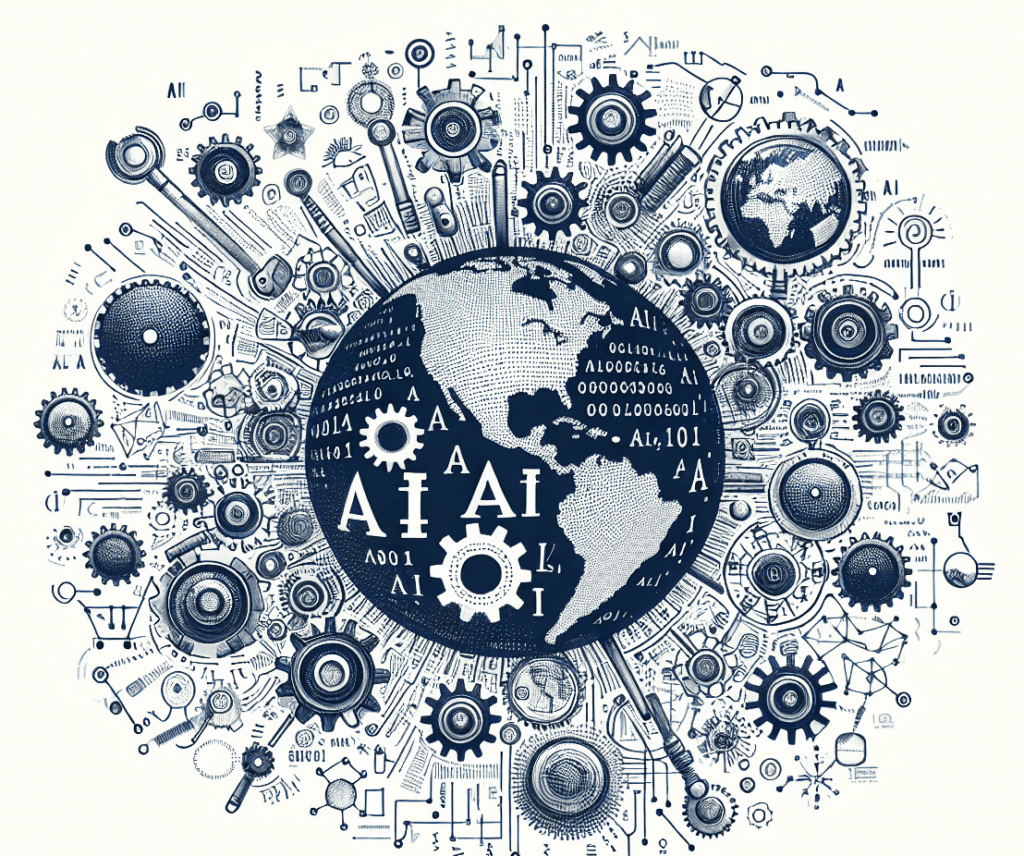
AI’s integration into economies worldwide suggests a substantial increase in global economic activity. By 2030, AI could contribute approximately $13 trillion to the global economy, marking a 16% rise in cumulative GDP compared to today’s figures. This growth stems from AI-driven innovations and efficiencies in sectors ranging from manufacturing to healthcare.
Disparities in Economic Benefits
The economic benefits of AI are not distributed equally among nations. Leading AI adopters could see net economic benefits increase by 20 to 25%, primarily due to their advanced infrastructures and investments in AI technologies. In contrast, developing countries might only see a 5 to 15% increase, potentially widening the economic divide between nations.
Corporate Economic Performance
The disparity is also evident at the corporate level, where AI adoption plays a critical role in financial outcomes. Companies that integrate AI comprehensively across their operations—referred to as front-runners—could potentially double their cash flows by 2030. Conversely, companies that lag in AI adoption might experience a decline in cash flows by as much as 20%. This underscores the importance of leveraging data to drive AI integration and financial success.
Investment Trends in AI
The financial commitment to AI innovation is robust, with significant investments fueling its development. In 2016 alone, established firms allocated $18-27 billion to AI projects, and venture capital funding for AI startups surged by 40% from 2013 to 2016. This trend underscores the growing recognition of AI’s potential to transform business operations and profitability.
Productivity and Labor Market Transformations
AI is a catalyst for productivity enhancement, acting as a general-purpose technology that spurs further innovation. For instance, it is projected to boost U.S. labor productivity by 1.5 percentage points annually in the decade following its widespread adoption. This increase is primarily due to AI’s ability to automate routine tasks, allowing human workers to focus on more complex and creative functions.
Challenges and Societal Impacts
However, the transition to AI-driven economies is not without challenges. The shift in occupational structures due to automation is likely to exert downward pressure on wages and exacerbate income disparities. This economic shift could lead to increased social tensions if not managed with effective policies and progressive workforce strategies.
Potential Solutions and Forward-Looking Strategies
To mitigate the adverse effects of job displacement, innovative solutions such as job sharing, breaking the traditional job-revenue connection, and potentially implementing a Universal Basic Income are being discussed. Furthermore, reinvestment of increased profits from automation into business expansion could foster job creation, demonstrating AI’s capacity to not only disrupt but also develop the employment landscape.
AI’s profound impact on the economy necessitates thoughtful integration and regulatory frameworks to maximize benefits while minimizing disruptions. As we advance, the focus will be on leveraging AI to foster an inclusive, productive, and economically balanced global society.
New Opportunities Amidst Automation
As we navigate the evolving landscape of work influenced by AI and robotics, a spectrum of new career opportunities is emerging, reshaping how we think about employment and skill development. These advancements are not merely displacing jobs but are also creating novel roles that require a blend of technical acumen and creative problem-solving. This shift highlights the growing importance of careers that harness the power of data and technology.
Emerging Career Paths in AI and Robotics
The surge in automation and AI technologies has catalyzed the growth of several key professions. Careers such as Machine Learning Engineers, Data Scientists, and Robotics Engineers are becoming increasingly crucial in our technology-driven world. Similarly, roles like AI Engineers and Business Intelligence Developers are essential for companies looking to leverage data for strategic decisions. These career paths not only highlight the necessity for technical skills but also underscore the importance of understanding AI’s broader impact on industries, making careers in these fields more relevant than ever.
The Dual Role of Automation in Job Markets
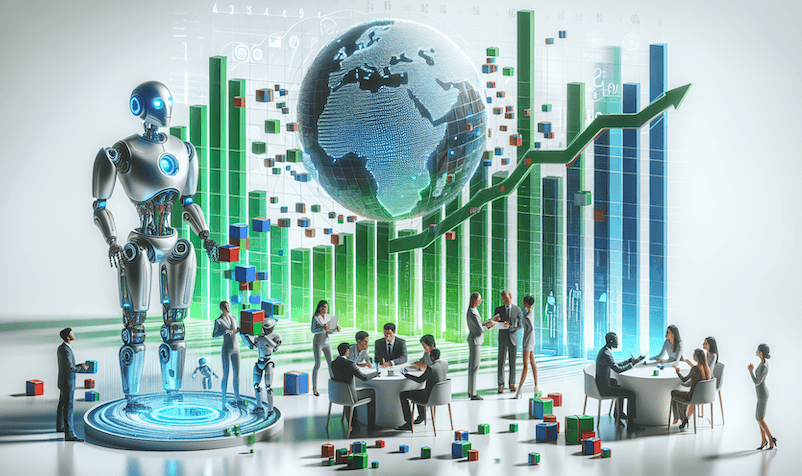
- Preventing Tedious TasksAutomation liberates human workers from monotonous, repetitive tasks, allowing them to focus on more complex and intellectually stimulating projects. This shift not only enhances job satisfaction but also encourages creative and strategic thinking in their careers, which are difficult to automate.
- Redefining EmploymentWith the potential displacement of jobs due to automation, there’s a growing need to rethink what employment and career options mean in the modern era. This includes considering how we can better integrate leisure and personal development into our lives, potentially leading to a more balanced lifestyle and inspiring new job ideas.
- Creation of New JobsWhile automation may streamline certain processes, it also creates new job opportunities and positions. For instance, as manual tasks are automated, employees can take on new roles that involve overseeing these automated processes or engaging in tasks that require a human touch, opening up diverse career paths.
Economic and Productive Impacts of Automation
- Wage Increases for Skilled WorkersStudies have shown that workers who are adept with computer and automation technologies tend to earn significantly higher wages. This not only motivates the workforce to upskill but also helps in reducing the wage gap based on skill levels, enhancing their prospects for securing good-paying jobs in their careers.
- Enhanced Productivity By eliminating time-consuming manual processes, companies can allocate more resources towards innovation and development. This not only boosts productivity but also reduces operational costs, benefiting the economy at large and creating more career options.
The Future Landscape of Employment
- Job Transition and TrainingAs existing roles evolve, there is a heightened focus on training and development to prepare employees for the future. This transition phase is crucial as it determines how well the workforce can adapt to new technologies and processes, shaping future careers and defining new roles.
- The emergence of New OccupationsInnovations in AI and automation are expected to lead to the creation of entirely new job categories. Roles such as AI prompt engineers and automation experts are just the beginning, with many more innovative paths likely to be defined in the coming years, expanding career opportunities and enriching the list of careers.
The dynamic interplay between AI, robotics, and employment is crafting a new narrative in the job market. By embracing these changes and preparing for new opportunities, we can ensure a future where technology and human ingenuity coexist harmoniously, driving both personal and economic growth in various careers.
Skill Development and Education
In the realm of AI and robotics, the demand for specialized skills is surging, transforming educational pathways and career landscapes. As we adapt to these changes, focusing on both technical and soft skills becomes crucial for those entering or progressing in this field, opening up a wide range of career options.
Essential Skills for AI Careers
To thrive in AI-related jobs, certain technical skills are indispensable. Proficiency in programming languages like Python, Java, JavaScript, and R is crucial. Understanding machine learning, natural language processing, and AI ethics forms the backbone of effective AI applications. Furthermore, soft skills such as problem-solving, collaboration, and communication are equally vital, ensuring that AI solutions are implemented effectively and ethically. This highlights the importance of diverse skills and data knowledge in these careers.
Pathways to Acquiring AI Skills
Several educational routes can lead to a career in AI:
- University Degrees: Degrees in computer science, data science, mathematics, and statistics provide a strong foundation.
- AI Boot Camps and Online Courses: These offer practical, intensive training in specific AI skills.
- Self-Study Resources: Numerous online platforms provide courses that cater to various AI competencies.
- Apprenticeships: Hands-on experience in AI applications through real-world projects under expert guidance.
Building a Portfolio
Creating and maintaining an online portfolio of hands-on projects is a strategic step for anyone looking to enter the AI field. This portfolio not only showcases your portfolio skills to potential employers but also provides practical experience in solving real-world problems using AI.
The Importance of Continuous Learning
AI is a rapidly evolving field. Staying updated with the latest developments and continuously enhancing your skills are imperative. This ongoing learning process ensures relevance in the job market and enables individuals to leverage new AI advancements effectively.
Educational System Response
The current educational system faces challenges in preparing students adequately for the future job market, particularly in AI and robotics. Redesigning work to integrate human-machine collaboration effectively and emphasizing the development of higher cognitive skills are recommended strategies to address these challenges.
Upskilling and Reskilling Initiatives
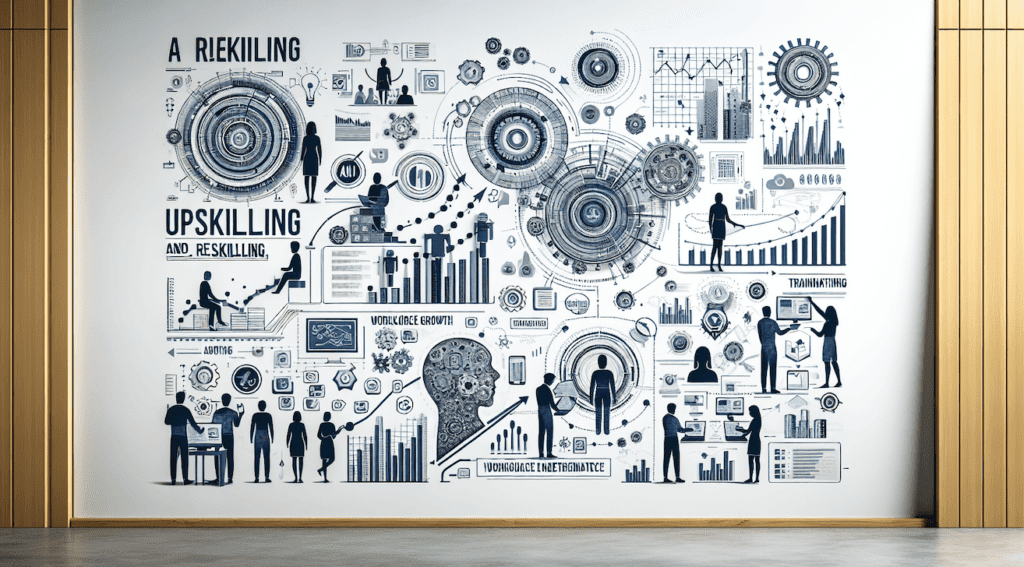
Organizations are increasingly focusing on upskilling and reskilling their workforce to meet the demands of AI integration. This involves enhancing the skills of the workforce to keep pace with technological advancements.
- Training Mid-Level EmployeesUpskilling plays a crucial role in bridging the gap between existing workforce capabilities and new AI technologies, ensuring that the workforce’s skills are up to date.
- Fostering a Culture of Lifelong LearningEncouraging continuous education and skill development is essential for keeping pace with technological advancements, ensuring that individuals are always enhancing their skills.
- Developing Soft SkillsAs AI takes over more routine tasks, soft skills like leadership, empathy, and critical thinking become increasingly important in the job market.
Educational Programs and Degrees
Institutions like Nexford University are pioneering with specialized degrees in AI, such as a BBA with a specialization in AI and an MBA in advanced AI. These programs are designed to equip students with the necessary skills to excel in the AI-driven job market.
By focusing on these educational and skill development strategies, individuals and organizations can better prepare for the ongoing transformations in the job market driven by AI and robotics. This preparation is not only about adapting to changes but also about actively shaping the future of work in a way that leverages human ingenuity alongside artificial intelligence.
Ethical and Social Considerations
Common Misconceptions and Public Perception
Misunderstandings about AI and robotics are widespread. Many believe that autonomous machines are entirely self-sufficient and that AI has human-like general intelligence. There’s also a common fear that robots will replace all human jobs and that AI is infallible and unbiased. However, these beliefs do not align with the current capabilities and limitations of AI technologies. For instance, AI does not possess consciousness or emotions and is far from being able to outsmart human control.
Public opinion holds a cautious stance towards the rapid development of AI, with a significant portion of the population advocating for regulations to ensure that AI advancements do not threaten job security. A survey revealed that 58% of respondents support government regulations around the use of generative AI in workplaces to safeguard employment.
Privacy and Data Protection
The integration of AI into daily operations has heightened concerns about privacy. The application of AI for surveillance, employee monitoring, and extensive data collection exposes individuals to potential privacy violations. Organizations can counteract these risks by implementing protective measures such as data masking, anonymization, encryption, and stringent data access controls. These steps are crucial to safeguard personal information against unauthorized access and misuse, ensuring data privacy is maintained.
Intellectual Property and Legal Challenges
News Artificial intelligence AI and Python skills 2024 deep learning AI #The emergence of AI-generated content has ignited debates over copyright and intellectual property rights. The legal system is currently grappling with the challenge of adapting to the realities presented by AI, where it must establish clear boundaries to protect the rights of content and determine ownership of AI-created works. This area demands significant legal clarity to prevent misuse and ensure fair treatment of creators and users of AI-generated content.
Regulation and Oversight
Currently, the responsibility of regulating AI largely rests with the companies that develop and use these systems. There’s a general skepticism about the ability of existing regulatory bodies to effectively manage the unique challenges posed by AI. For instance, while bodies like the National Highway Transportation Safety Association might address AI issues in autonomous vehicles, broader AI applications necessitate more specialized oversight to ensure ethical usage and prevent harm.
Addressing Ethical Concerns
Ethical issues such as bias, fairness, transparency, and security are at the forefront of AI and robotics integration. It’s crucial to ensure that AI systems are free from biases and that their operations are transparent and accountable. Robust security measures are also essential to protect against data breaches and the misuse of AI technologies, emphasizing the importance of data security.
Workforce Transition and Social Contract
As AI continues to reshape the job landscape, there’s a pressing need for policies that facilitate smooth workforce transitions. Highlighting the human benefits of enhanced performance and productivity through automation is vital. Discussions about AI’s impact on employment often lead to calls for a new social contract that addresses changes in the nature of jobs and the potential for significant shifts in employment types, underscoring the evolving job market.
Collaboration for a Balanced Approach
The technology sector, management, and labor representatives must work together to prioritize workforce well-being over mere efficiency gains from automation and surveillance tools. This collaborative approach is essential to leverage the benefits of AI while mitigating its potential drawbacks, ensuring that technological advancements contribute positively to society and workforce management, and highlighting the critical role of management in this equation.
By addressing these ethical and social considerations, we can guide the development of AI and robotics toward outcomes that are beneficial for all stakeholders involved. This approach not only propels technological advancements but also protects fundamental human rights and values in the digital age.
Adapting to Change

In the evolving landscape shaped by AI and robotics, adapting to change is not just beneficial—it’s essential. As AI technologies advance, they bring significant shifts in how we work, learn, and interact. Embracing these changes effectively is key to navigating the future.
Embracing AI in Decision-Making
AI excels at processing vast amounts of data quickly and accurately, providing us with insights that were previously unattainable. By integrating AI into our decision-making processes, we can make more informed choices in business strategies, customer interactions, and beyond. This capability enables us to anticipate market trends and respond to customer needs with precision, enhancing both customer satisfaction and business success through data-driven insights.
Fostering Innovation and Creativity
One of the most exciting aspects of AI is its ability to handle tedious and repetitive tasks through automation. This freedom allows us to focus on more complex and creative challenges. Whether it’s solving intricate problems or innovating new products and services, AI supports us by taking care of mundane tasks, allowing human creativity to flourish.
Personalizing Customer Experiences
AI’s ability to analyze user behavior and preferences leads to more personalized customer interactions. By understanding individual customer needs and habits, businesses can tailor their offerings, providing a more targeted and satisfying experience. This personalized approach not only boosts customer loyalty but also increases the effectiveness of marketing efforts.
Preparing for an AI-Driven World
The shift towards an AI-dominated landscape is inevitable, and preparation is key. Embracing our uniqueness, continually learning about AI advancements, and building a strong professional network are crucial steps. These efforts ensure that we remain valuable and adaptable in a market that increasingly relies on AI technologies.
Government’s Role in Smoothing the Transition
The transition to automation and AI integration impacts not just individual careers but the entire societal structure. Governments play a pivotal role in forming policies that ensure this transition is smooth, fast, and humane. By focusing on education, re-skilling, and social welfare programs, policymakers can ease the shift and help society adapt to the new technological norms.
Enhancing Productivity and Efficiency
AI’s impact on productivity is profound. By automating routine tasks, AI allows employees to dedicate more time to strategic and impactful activities. This shift not only boosts individual productivity but also enhances organizational efficiency, leading to better outcomes and a healthier bottom line.
The Net Impact of AI
The overall impact of AI on the workplace is expected to be overwhelmingly positive. With new roles being created and existing employees freed up to tackle more meaningful projects, AI is set to revolutionize the work environment. This transformation fosters a more engaging and rewarding workplace, where creativity and strategic thinking are at the forefront.
By understanding these key areas and actively engaging with the ongoing changes, we can harness the full potential of AI and robotics. This proactive approach not only prepares us for the future but also ensures that we thrive in this new era of technological advancement.
Conclusion
As we peer into the future shaped by AI and robotics, it’s clear that these technologies herald both significant challenges and immense opportunities for our careers, lives, and the broader societal fabric. Our exploration underscores the dual nature of automation: while it poses risks to traditional job markets and ethical dilemmas, it also promises enhanced productivity, new career paths in technology, and a potential reshaping of economic landscapes through innovation.
The key takeaway is the necessity for a balanced approach – one that harnesses AI’s power to innovate while conscientiously addressing the challenges and ensuring equitable benefits across the global workforce.
Moving forward, the responsibility falls not only on policymakers and businesses but also on individuals to adapt, upskill, and prepare for the transformations ahead. By fostering a culture of continuous learning and collaboration, and by prioritizing the development of both technical and soft skills, we can navigate the uncertainties of an AI-infused future.
Ultimately, the convergence of AI, robotics, and human ingenuity offers a path to a future where technology amplifies human potential, creating a world that is more efficient, creative, and inclusive, thus enhancing careers and job prospects.
FAQs
How will AI and robotics transform the employment landscape?
Artificial intelligence (AI) and robotics are poised to significantly alter the job market. According to a Goldman Sachs report, AI could potentially replace the equivalent of 300 million full-time jobs, accounting for a quarter of work tasks in the US and Europe by 2030. Despite this, the introduction of AI and robotics may also create new job opportunities and lead to a surge in productivity, indicating a transformative shift in the job market landscape.

